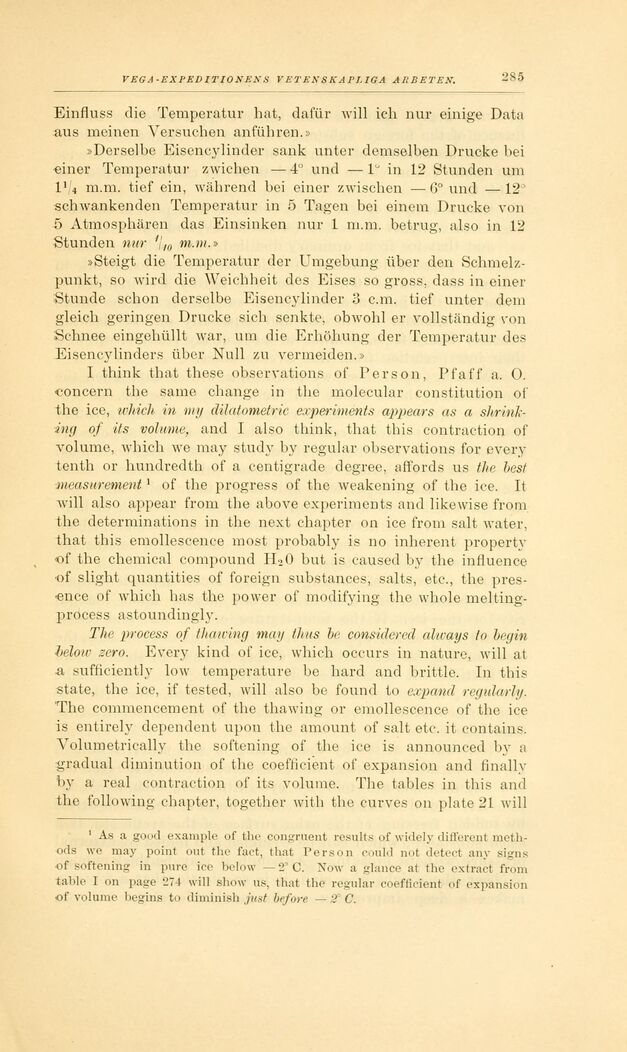
Full resolution (JPEG) - On this page / på denna sida - Sidor ...

<< prev. page << föreg. sida << >> nästa sida >> next page >>
Below is the raw OCR text
from the above scanned image.
Do you see an error? Proofread the page now!
Här nedan syns maskintolkade texten från faksimilbilden ovan.
Ser du något fel? Korrekturläs sidan nu!
This page has never been proofread. / Denna sida har aldrig korrekturlästs.
Einfluss die Temperatur hat, dafür will ich nur einige Data
aus meinen Versuchen anführen.»
»Derselbe Eisencylinder sank unter demselben Drucke bei
einer Temperatur zwichen —4° und —1° in 12 Stunden um
VU m.m. tief ein, während bei einer zwischen —6° und —12°
schwankenden Temperatur in 5 Tagen bei einem Drucke von
5 Atmosphären das Einsinken nur 1 m.m. betrug, also in 12
Stunden nur 1\i0 m.m.»
»Steigt die Temperatur der Umgebung über den
Schmelzpunkt, so wird die Weichheit des Eises so gross, dass in einer
Stunde schon derselbe Eisencylinder 3 c.m. tief unter dem
gleich geringen Drucke sich senkte, obwohl er vollständig von
Schnee eingehüllt war, um die Erhöhung der Temperatur des
Eisencylinders über Null zu vermeiden.»
I think that these observations of Person, Pfaff a. 0.
concern the same change in the molecular constitution of
the ice, which in my dilatometric experiments appears as a
shrinking of its volume, and I also think, that this contraction of
volume, which we may study by regular observations for every
tenth or hundredth of a centigrade degree, affords us the best
measurement1 of the progress of the weakening of the ice. It
will also appear from the above experiments and likewise from
the determinations in the next chapter on ice from salt water,
that this emollescence most probably is no inherent property
of the chemical compound H-.-0 but is caused by the influence
of slight quantities of foreign substances, salts, etc., the
presence of which has the power of modifying the whole
melting-process astoundingly.
The process of thawing may thus be considered alivays to begin
below zero. Every kind of ice, which occurs in nature, will at
•a sufficiently low temperature be hard and brittle. In this
state, the ice, if tested, will also be found to expand regularly.
The commencement of the thawing or emollescence of the ice
is entirely dependent upon the amount of salt etc. it contains.
Volumetrically the softening of the ice is announced by a
gradual diminution of the coefficient of expansion and finally
by a real contraction of its volume. The tables in this and
the following chapter, together with the curves on plate 21 will
1 As a good example of the congruent results of widely different
methods we may point out the fact, that Person could not detect any signs
of softening in pure ice below — 2’ C. Now a glance at the extract from
table I on page 274 will show us, that the regular coefficient of expansion
of volume begins to diminish just before — 2’: C.
<< prev. page << föreg. sida << >> nästa sida >> next page >>